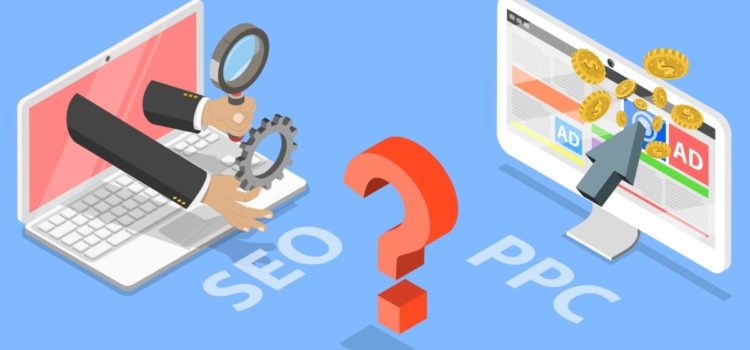Demystifying PPC Advertising: A Step-by-Step Guide

Introduction to PPC Advertising
Pay-Per-Click (PPC) advertising stands as a cornerstone in the realm of digital marketing. It’s a model where advertisers pay a fee each time their ad is clicked, essentially buying visits to their site. The allure of PPC lies in its ability to generate immediate traffic and complement long-term digital marketing strategies. Core components of PPC campaigns include keywords, ad copy, and targeting options.
Historical Evolution of PPC Advertising
The history of PPC advertising is a fascinating journey that mirrors the evolution of the internet and digital marketing. Starting with simple text ads, the PPC model has evolved to incorporate complex algorithms, sophisticated targeting methods, and a variety of ad formats including video and interactive ads. Understanding this evolution helps advertisers appreciate the current capabilities and limitations of PPC platforms.
Understanding Different Platforms for PPC
PPC advertising spans across various platforms, each with unique features. Google Ads, renowned for its vast reach, allows ads on its search results page and network of websites. Bing Ads, while smaller, offers a more affordable alternative with less competition. Social media platforms like Facebook and LinkedIn cater to more specific audience targeting based on user profiles and behaviors.
The Role of Creativity in PPC Campaigns
While PPC is often viewed through a technical lens, the role of creativity cannot be understated. Crafting unique, engaging ad copy and eye-catching visuals is crucial for standing out in a crowded digital space. Creative storytelling and emotive messaging can significantly enhance click-through rates and overall campaign effectiveness.
Setting Up Your First PPC Campaign
Setting up a PPC campaign involves several steps:
- Choose a platform (Google Ads, Bing Ads, etc.).
- Conduct thorough keyword research, understanding the balance between broad, exact, and phrase match types.
- Develop compelling ad copies that resonate with your target audience, and select the most effective ad formats (text, display, video).
Targeting and Audience Selection
Effective PPC campaigns hinge on precise audience targeting. Define your audience based on demographics, interests, and browsing behaviors. Utilize geographic targeting to reach customers in specific locations and ad scheduling to display ads at optimal times.
Integrating PPC with Other Marketing Strategies
PPC should not exist in a silo but rather be integrated with other marketing strategies for maximum impact. This includes aligning PPC campaigns with SEO efforts, email marketing campaigns, and social media strategies. Such integration ensures a cohesive marketing message and better utilization of marketing budgets.
Budgeting and Bidding Strategies
Budgeting in PPC is pivotal. Start with a comfortable budget and adjust based on performance. Bidding strategies vary, from cost-per-click (CPC) to cost-per-impression (CPM) models. The key is to balance cost with desired outcomes, be it ad visibility or conversions.
The Importance of Ethics in PPC
Ethics in PPC advertising is a critical but often overlooked aspect. Advertisers like Webterior Designs have a responsibility to ensure truthful representation of products and services. This includes avoiding misleading ad copies and respecting user privacy. Ethical PPC practices not only build trust with the audience but also enhance brand reputation.
Ad Optimization Techniques
Ad optimization involves continuous testing and tweaking:
- Implement A/B testing to determine the most effective ad variants.
- Monitor key performance indicators like Click-Through Rate (CTR) and Conversion Rate.
- Use data and analytics to refine targeting, bidding, and ad creative.
Analyzing and Learning from PPC Campaign Data
Analyzing campaign data is crucial for understanding the effectiveness of a PPC campaign. This involves delving into metrics beyond clicks and impressions, such as customer acquisition costs and lifetime value. Learning from this data helps in refining strategies, better targeting, and ultimately achieving a higher return on investment.
Maximizing ROI from PPC Campaigns
To maximize ROI, focus on:
- Aligning ads with landing pages to improve conversion rates.
- Regularly reviewing campaign performance to identify areas for improvement.
- Balancing cost-efficiency with quality traffic and leads.
Common Pitfalls and How to Avoid Them
Common PPC pitfalls include neglecting keyword research, underestimating the importance of ad copy, and ignoring the need for ongoing optimization. Avoid these by staying informed, testing regularly, and adapting to performance data.
Future Trends in PPC Advertising
Emerging trends in PPC include the increasing use of artificial intelligence (AI) for automated bidding and targeting. Staying abreast of these trends is crucial for future-proofing PPC strategies.
Navigating the Challenges of PPC Advertising
Navigating the challenges of PPC advertising requires a blend of strategic planning, continuous learning, and adaptability. Challenges like rapidly changing platform algorithms, increasing competition, and ad fatigue among audiences necessitate a proactive approach to campaign management and a willingness to experiment with new tactics.
Conclusion
PPC advertising can be an incredibly effective tool in your digital marketing arsenal when used correctly. The key is to start small, learn from data, and continuously optimize your campaigns.
Additional Resources
For deeper insights into PPC, consider exploring resources like Google’s Academy for Ads, various online PPC forums, and digital marketing blogs that offer advanced tips and strategies.

